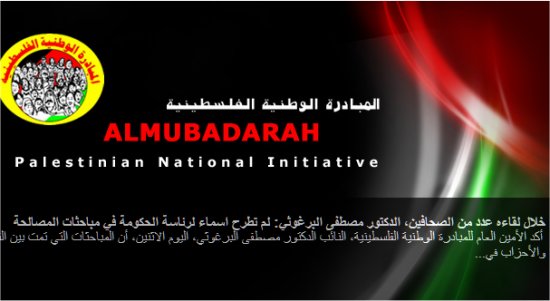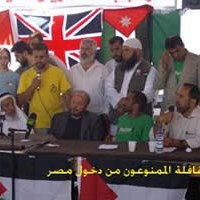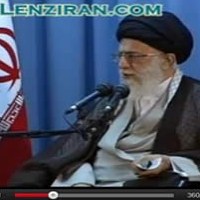![]()
Wed, May 11, 2011 | The Meir Amit Intelligence and Terrorism Information Center
The Main Points of the Fatah-Hamas Reconciliation Agreement?
On May 3 a reconciliation agreement was signed in Cairo between Fatah and Hamas. The signing was attended by Azzam al-Ahmed of Fatah, Khaled Mashaal, head of the Hamas political bureau in Damascus and representatives of various Palestinian terrorist organizations. On May 4 a ceremony was held to celebrate the signing, attended by Palestinian Authority chairman Mahmoud Abbas. The main points of the agreement were the following (Wafa News Agency, May 6, 2011):
— The PLO will be reorganized to include all the Palestinian factions, and will establish itself as “the only legitimate representative” of the Palestinian people. A new Palestinian Legislative Council will be elected, based on proportional representation of all factions. Until then, the reorganized PLO will serve as the temporary leadership.
— Elections will be held simultaneously for the presidency, the Palestinian Legislative Council and the Palestinian National Council throughout Judea, Samaria, the Gaza Strip and Jerusalem.
— An interim unity government will be set up to reestablish the Palestinian security services, do what is necessary to hold elections, rebuild the Gaza Strip and deal with other administrative issues.
— Agreements will be made to determine the structure of the Palestinian security services, into which the existing security services will be integrated. The source of authority for the security services will be designated.
The main points of the speeches given at the signing were the following (Egyptian radio broadcast, May 4, 2011):
— Mahmoud Abbas, chairman of the Palestinian Authority, praised the agreement. He claimed that it came at a good time, because “the Israeli occupation” against the Palestinian people and land “has escalated in recent years.” He noted that recently “one after another,” the nations of the world had recognized a Palestinian state within the 1967 borders. He said that September 2011 was the target date for the Palestinians to announce the establishment of their state, and in a veiled threat added that if Israel did not change its path [of action] the date might be moved to the earlier ” fifth or sixth month [May or June].” He said also that so far Israel had used the schism [between Fatah and Hamas] as an excuse not to negotiate with the Palestinians and that he rejected Israeli Prime Minister Benyamin Netanyahu’s demand that he [Mahmoud Abbas] choose between peace with Hamas and peace with Israel. However, he said that the Palestinians were committed to the two-state solution within the June 1967 borders, and emphasized that the Palestinians rejected violence and denounced terrorism.
— Khaled Mashaal, head of Hamas’ political bureau, also praised the reconciliation, saying that now the Palestinians were “deploying to achieve a common national goal,” which was the establishment of a free Palestinian state in the West Bank and Gaza Strip, whose capital would be Jerusalem, “without ceding a single inch.” Now, he said, the Palestinians could jointly wage “our campaign against the Israeli occupier.” He added that Hamas was in favor of “a movement on all the fronts:” a struggle on the ground, the “resistance” [i.e., violence and terrorism], and achieving international [pro-Palestinian] decisions and legitimization by means of a diplomatic struggle.
While the various delegations were in Egypt, they were invited to a Muslim Brotherhood center in a Cairo suburb. They met with Mohamed Badia, the movement’s general guide. Present at the meeting were Khaled Mashaal, head of Hamas’ political bureau in Damascus, Ahmed Jibril, secretary general of the Popular Front for the Liberation of Palestine, Ramadan Shalah, secretary general of the Palestinian Islamic Jihad, and Fatah’s Sahar Bseiso (Muslim Brotherhood website, May 7, 2011).
Disputed Issues
The reconciliation agreement is based on general formulas in an attempt to bridge the differences in matters of principle which were not resolved during the long-term contacts which preceded it. The morning after the ceremony, contacts were initiated between Fatah and Hamas to make the agreement practicable. Some of the issues discussed were the following:
Mutual Release of Prisoners
The issue of the prisoners held by each side is the main stumbling block. Senior Hamas figures have repeatedly stated that it will be the top priority when the agreement is implemented. For example, Ismail Haniya, head of the de facto Hamas administration in the Gaza Strip, called on the Palestinian Authority to stop interrogating and detaining activists from Hamas and the other organizations (Hamas’ Al-Aqsa TV, May 5, 2011). Khalil al-Haya, a member of Hamas’ political bureau, said that the most urgent issue was “releasing political prisoners [sic] in the West Bank and Gaza Strip.”
The Palestinian and other Arab media reported that the Palestinian Authority’s security forces began releasing Hamas operatives immediately after the signing of the agreement, while Hamas made it easier for senior Fatah figures to leave the Gaza Strip. However, it was also reported that detentions continued (Hamas’ Palestine-info website, May 5; Qudsnet, May 6, 2011). Adnan al-Damiri, spokesman for the Palestinian Authority security services, said that they had not yet received instructions regarding the issue (Voice of Palestine Radio, May 5, 2011). Senior Hamas figure Mahmoud al-Zahar said that if the Palestinian Authority continued detaining [Hamas operatives] in the West Bank, Hamas would appeal to the Arab League and Egypt to oversee the agreement’s implementation. He added that it was a problem which, at this stage, prevented the implementation of the agreement, and accused the Palestinian Authority of responsibility for its failure (Al-Quds TV, May 8, 2011).
The Conflict with Israel
Remarks made by senior Hamas figures indicated two central themes: on one hand, they tried to present a conciliatory, pragmatic front which would not disturb the reconciliation, and at the same time support the Palestinian Authority in its political campaign against Israel. On the other, Hamas spokesmen repeatedly noted that Hamas would not accept the conditions of the International Quartet, that is, it would not recognize Israel and would not abandon the “resistance” [i.e., terrorism] as its central component.
Two senior Hamas figures, Khaled Mashaal and his deputy, Musa Abu Marzuq, presented a moderate, conciliatory front to Western and Arab audiences:
— On May 7 Khaled Mashaal, head of Hamas’ political bureau, told the Wall Street Journal that he “stood firm behind Hamas’s right to armed struggle against Israel [i.e., wage a terrorist campaign].” “How to manage the resistance,” he said, “what’s the best way to achieve our goals, when to escalate and when to cease fire, now we have to agree on all those decisions…” However, according to the paper, “If Mr. Meshaal follows through on his pledge, it would mean that Hamas would no longer attack Israel without the agreement of Palestinian President [sic] Mahmoud Abbas, the Fatah leader…”[1]
— Musa Abu Marzuq, Khaled Mashaal’s deputy, said that the unity government which would be established would not be responsible for negotiations with Israel, and that the issue would be in the hands of the PLO (Al-Jazeera TV, May 4, 2011). Thus there is an allegedly positive response to the Palestinian Authority demand that it continue as responsible for the peace process.
Other senior figures stressed Hamas’ extremist fundamental positions, which have not changed:
— Ismail Hamdan said that Hamas would not recognize the “Zionist entity” or compromise on the “resistance” [i.e., violence and terrorism]. He claimed that the armed resistance needed to be “complemented” by political and public efforts and by the construction of a “regional culture of resistance” to accompany that of the Palestinians. He added that the International Quartet was no longer united and rejected a return to negotiations with Israel, because they had “turned into a joke” (Hamas’ Palestine-info website, May 5, 2011). Khalil al-Haya, a member of the Hamas political bureau said that Hamas was a “fighting resistance movement” whose objective was “to liberate Palestine [sic]” (Al-Quds TV, May 4, 2011).
— Salah al-Bardawil said that the International Quartet’s conditions were no longer relevant now that the reconciliation agreement had been signed. He claimed the conditions were a “decree” imposed on the Palestinian people in an attempt to abolish the “resistance” [i.e., the Palestinian terrorist campaign], which was the Palestinians’ “natural right” (Al-Aqsa TV, May 4, 2011).
The Unity Government and Future Elections
Both sides dealt with the issue of forming a government, especially with who would head it. The Arab media reported that Hamas and Fatah had agreed that Salam Fayyad would not be its prime minister, and each suggested its own candidate. However, a Hamas’ Safa News Agency claimed that Mahmoud Abbas was insisted on promoting Salam Fayyad as a candidate for the position and that he and Hamas were discussing the issue (Safa News Agency, May 5, 2011).
Appendix
Text of the Agreement between Fatah and Hamas[2]
3 May 2011
Translated by Al Mubadara, the Palestinian National Initiative, this document is currently in the process of being signed by all of Palestine’s factions and parties.
Under the auspices of Egypt, delegations from the Fatah and Hamas movements met in Cairo on April 27, 2011 to discuss the issues concerning ending the political division and the achievement of national unity. On top of the issues were some reservations related to the Palestinian National Unity Accord made in 2009.
Both political parties mutually agreed that the basis of understanding made during the meeting are committing to both parties in the implementation of the Palestinian National Reconciliation Agreement. The basis of understanding agreed upon by Fatah and Hamas are as follows:
1. Elections
A. Election Committee:
Both Fatah and Hamas agree to identify the names of the members of the Central Election Commission in agreement with the Palestinian factions. This list will then be submitted to the Palestinian President who will issue a decree of the reformation of the committee.
B. Electoral Court:
Both Fatah and Hamas agree on the nomination of no more than twelve judges to be members of the Electoral Court. This list will then be submitted to the Palestinian President in order to take the necessary legal actions to form the Electoral Court in agreement with the Palestinian factions.
C. Timing of Elections:
The Legislative, Presidential, and the Palestinian National Council elections will be conducted at the same time exactly one year after the signing of the Palestinian National Reconciliation Agreement.
2. Palestine Liberation Organization
The political parties of both Fatah and Hamas agree that the tasks and decisions of the provisional interim leadership cannot be hindered or obstructed, but in a manner that is not conflicting with the authorities of the Executive Committee of the Palestine Liberation Organization.
3. Security
It was emphasized that the formation of the Higher Security Committee which will be formed by a decree of the Palestinian President and will consist of professional officers in consensus.
4.Government
A. Formation of the Government:
Both Fatah and Hamas agree to form a Palestinian government and to appoint the Prime Minister and Ministers in consensus between them.
B. Functions of the Government:
1. Preparation of necessary condition for the conduction of Presidential, Legislative and the Palestinian National Council elections.
2. Supervising and addressing the prevalent issues regarding the internal Palestinian reconciliation resulting from the state of division.
3. Follow-up of the reconstruction operations in the Gaza Strip and the efforts to end the siege and blockade that is imposed on it.
4. Continuation of the implementation of the provisions of the Palestinian National Accord.
5. To resolve the civil and administrative problems that resulted from the division.
6. Unification of the Palestinian National Authority institutions in the West Bank, Gaza Strip and Jerusalem.
7. To fix the status of the associations, Non-Governmental Organizations and charities.
5. Legislative Council:
Both Fatah and Hamas agree to reactivate the Palestinian Legislative Council in accordance to the Basic Law.
Note:
[1] http://online.wsj.com/article/SB10001424052748704810504576307510480968584.html?KEYWORDS=Hamas
[2] The text of the Fatah-Hamas agreement was published by Mustapha Barghouti, a distant cousin of imprisoned Fatah leader Marwan Barghouti and 2005 candidate for the presidency of the Palestinian National Authority, on his website, Al Mubadara, on May 4, 2011. The Palestinian National Initiative was signed in Cairo on April 27, 2011. The reconciliation agreement’s reach is limited to a transition period until elections are held for the presidency and the legislature within the year.



 RSS
RSS
















Latest Comments
Hello Mike, Thank you for your positive feedback to the article. I felt there wasn’t too much critical analysis of ...
Thanks for this considered and well constructed article. A follow up article on the manner in which the editorial contro...
THE CLUELESSNESS OF CLAIMING THAT OBAMA'S MIDDLE EAST POLICIES WERE A FAILURE CANNOT BE FURTHER FROM THE TRUTH, WHAT THE...
As long as Obama is the president of the usa do not trust the us government......
Thank you for an good read....